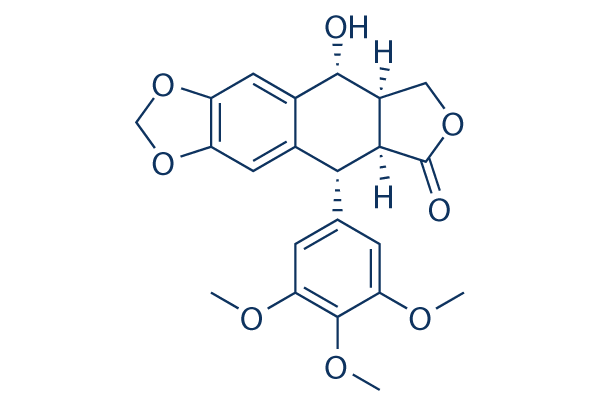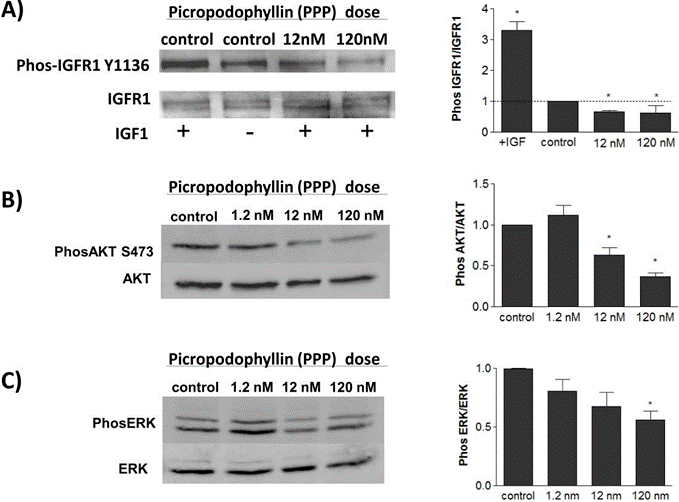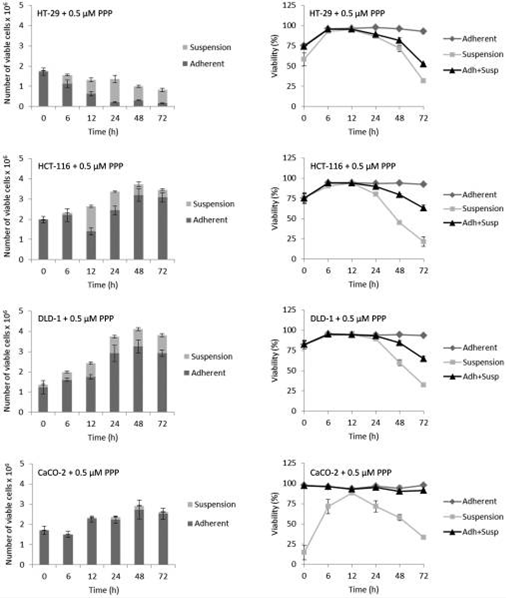
- Bioactive Compounds
- By Signaling Pathways
- PI3K/Akt/mTOR
- Epigenetics
- Methylation
- Immunology & Inflammation
- Protein Tyrosine Kinase
- Angiogenesis
- Apoptosis
- Autophagy
- ER stress & UPR
- JAK/STAT
- MAPK
- Cytoskeletal Signaling
- Cell Cycle
- TGF-beta/Smad
- DNA Damage/DNA Repair
- Compound Libraries
- Popular Compound Libraries
- Customize Library
- Clinical and FDA-approved Related
- Bioactive Compound Libraries
- Inhibitor Related
- Natural Product Related
- Metabolism Related
- Cell Death Related
- By Signaling Pathway
- By Disease
- Anti-infection and Antiviral Related
- Neuronal and Immunology Related
- Fragment and Covalent Related
- FDA-approved Drug Library
- FDA-approved & Passed Phase I Drug Library
- Preclinical/Clinical Compound Library
- Bioactive Compound Library-I
- Bioactive Compound Library-Ⅱ
- Kinase Inhibitor Library
- Express-Pick Library
- Natural Product Library
- Human Endogenous Metabolite Compound Library
- Alkaloid Compound LibraryNew
- Angiogenesis Related compound Library
- Anti-Aging Compound Library
- Anti-alzheimer Disease Compound Library
- Antibiotics compound Library
- Anti-cancer Compound Library
- Anti-cancer Compound Library-Ⅱ
- Anti-cancer Metabolism Compound Library
- Anti-Cardiovascular Disease Compound Library
- Anti-diabetic Compound Library
- Anti-infection Compound Library
- Antioxidant Compound Library
- Anti-parasitic Compound Library
- Antiviral Compound Library
- Apoptosis Compound Library
- Autophagy Compound Library
- Calcium Channel Blocker LibraryNew
- Cambridge Cancer Compound Library
- Carbohydrate Metabolism Compound LibraryNew
- Cell Cycle compound library
- CNS-Penetrant Compound Library
- Covalent Inhibitor Library
- Cytokine Inhibitor LibraryNew
- Cytoskeletal Signaling Pathway Compound Library
- DNA Damage/DNA Repair compound Library
- Drug-like Compound Library
- Endoplasmic Reticulum Stress Compound Library
- Epigenetics Compound Library
- Exosome Secretion Related Compound LibraryNew
- FDA-approved Anticancer Drug LibraryNew
- Ferroptosis Compound Library
- Flavonoid Compound Library
- Fragment Library
- Glutamine Metabolism Compound Library
- Glycolysis Compound Library
- GPCR Compound Library
- Gut Microbial Metabolite Library
- HIF-1 Signaling Pathway Compound Library
- Highly Selective Inhibitor Library
- Histone modification compound library
- HTS Library for Drug Discovery
- Human Hormone Related Compound LibraryNew
- Human Transcription Factor Compound LibraryNew
- Immunology/Inflammation Compound Library
- Inhibitor Library
- Ion Channel Ligand Library
- JAK/STAT compound library
- Lipid Metabolism Compound LibraryNew
- Macrocyclic Compound Library
- MAPK Inhibitor Library
- Medicine Food Homology Compound Library
- Metabolism Compound Library
- Methylation Compound Library
- Mouse Metabolite Compound LibraryNew
- Natural Organic Compound Library
- Neuronal Signaling Compound Library
- NF-κB Signaling Compound Library
- Nucleoside Analogue Library
- Obesity Compound Library
- Oxidative Stress Compound LibraryNew
- Plant Extract Library
- Phenotypic Screening Library
- PI3K/Akt Inhibitor Library
- Protease Inhibitor Library
- Protein-protein Interaction Inhibitor Library
- Pyroptosis Compound Library
- Small Molecule Immuno-Oncology Compound Library
- Mitochondria-Targeted Compound LibraryNew
- Stem Cell Differentiation Compound LibraryNew
- Stem Cell Signaling Compound Library
- Natural Phenol Compound LibraryNew
- Natural Terpenoid Compound LibraryNew
- TGF-beta/Smad compound library
- Traditional Chinese Medicine Library
- Tyrosine Kinase Inhibitor Library
- Ubiquitination Compound Library
-
Cherry Picking
You can personalize your library with chemicals from within Selleck's inventory. Build the right library for your research endeavors by choosing from compounds in all of our available libraries.
Please contact us at [email protected] to customize your library.
You could select:
- Antibodies
- Bioreagents
- qPCR
- 2x SYBR Green qPCR Master Mix
- 2x SYBR Green qPCR Master Mix(Low ROX)
- 2x SYBR Green qPCR Master Mix(High ROX)
- Protein Assay
- Protein A/G Magnetic Beads for IP
- Anti-Flag magnetic beads
- Anti-Flag Affinity Gel
- Anti-Myc magnetic beads
- Anti-HA magnetic beads
- Magnetic Separator
- Poly DYKDDDDK Tag Peptide lyophilized powder
- Protease Inhibitor Cocktail
- Protease Inhibitor Cocktail (EDTA-Free, 100X in DMSO)
- Phosphatase Inhibitor Cocktail (2 Tubes, 100X)
- Cell Biology
- Cell Counting Kit-8 (CCK-8)
- Animal Experiment
- Mouse Direct PCR Kit (For Genotyping)
- New Products
- Contact Us
Picropodophyllin (PPP)
Synonyms: AXL1717
Picropodophyllin (PPP, AXL1717) is a IGF-1R inhibitor with IC50 of 1 nM. It displays selectivity for IGF-1R and does not coinhibit tyrosine phosphorylation the IR, or of a selected panel of receptors less related to IGF-IR(FGF-R, PDGF-R, OR EGF-R). Picropodophyllin (PPP) induces apoptosis with antineoplastic activity.

Picropodophyllin (PPP) Chemical Structure
CAS No. 477-47-4
Purity & Quality Control
Batch:
Purity:
99.95%
99.95
Picropodophyllin (PPP) Related Products
| Related Targets | Insulin Receptor | Click to Expand |
|---|---|---|
| Related Products | Linsitinib (OSI-906) NVP-AEW541 BMS-754807 GSK1904529A BMS-536924 AG-1024 NVP-ADW742 NT157 PQ 401 | Click to Expand |
| Related Compound Libraries | Kinase Inhibitor Library Tyrosine Kinase Inhibitor Library PI3K/Akt Inhibitor Library Cell Cycle compound library Angiogenesis Related compound Library | Click to Expand |
Signaling Pathway
Cell Data
| Cell Lines | Assay Type | Concentration | Incubation Time | Formulation | Activity Description | PMID |
|---|---|---|---|---|---|---|
| A-549 (human lung carcinoma) neoplastic cell line | Cytotoxic assay | In vitro cytotoxicity against the A-549 (human lung carcinoma) neoplastic cell line, IC50=60 nM | 14980682 | |||
| P-388 neoplastic cell line | Cytotoxic assay | In vitro cytotoxicity against the P-388 (from DBA/2 mouse) neoplastic cell line, IC50=60 nM | 14980682 | |||
| HT-29 (human colon carcinoma) neoplastic cell line | Cytotoxic assay | In vitro cytotoxicity against the HT-29 (human colon carcinoma) neoplastic cell line, IC50=60 nM | 14980682 | |||
| amnion cells | Antiviral assay | Antiviral activity against HSV1 infected in human primary amnion cells assessed as inhibition of virus-induced pathogenic effect, Activity = 1.9 μM. | 9834179 | |||
| P388 | Cytotoxicity assay | Cytotoxicity against mouse P388 cells, IC50 = 6 μM. | 7673931 | |||
| A549 | Cytotoxicity assay | Cytotoxicity against human A549 cells, IC50 = 6 μM. | 7673931 | |||
| HT-29 | Cytotoxicity assay | Cytotoxicity against human HT-29 cells, IC50 = 6 μM. | 7673931 | |||
| TC32 | qHTS assay | qHTS of pediatric cancer cell lines to identify multiple opportunities for drug repurposing: Primary screen for TC32 cells | 29435139 | |||
| DAOY | qHTS assay | qHTS of pediatric cancer cell lines to identify multiple opportunities for drug repurposing: Primary screen for DAOY cells | 29435139 | |||
| SJ-GBM2 | qHTS assay | qHTS of pediatric cancer cell lines to identify multiple opportunities for drug repurposing: Primary screen for SJ-GBM2 cells | 29435139 | |||
| A673 | qHTS assay | qHTS of pediatric cancer cell lines to identify multiple opportunities for drug repurposing: Primary screen for A673 cells | 29435139 | |||
| SK-N-MC | qHTS assay | qHTS of pediatric cancer cell lines to identify multiple opportunities for drug repurposing: Primary screen for SK-N-MC cells | 29435139 | |||
| NB-EBc1 | qHTS assay | qHTS of pediatric cancer cell lines to identify multiple opportunities for drug repurposing: Primary screen for NB-EBc1 cells | 29435139 | |||
| Saos-2 | qHTS assay | qHTS of pediatric cancer cell lines to identify multiple opportunities for drug repurposing: Primary screen for Saos-2 cells | 29435139 | |||
| LAN-5 | qHTS assay | qHTS of pediatric cancer cell lines to identify multiple opportunities for drug repurposing: Primary screen for LAN-5 cells | 29435139 | |||
| BT-12 | qHTS assay | qHTS of pediatric cancer cell lines to identify multiple opportunities for drug repurposing: Primary screen for BT-12 cells | 29435139 | |||
| OHS-50 | qHTS assay | qHTS of pediatric cancer cell lines to identify multiple opportunities for drug repurposing: Primary screen for OHS-50 cells | 29435139 | |||
| A673 | qHTS assay | qHTS of pediatric cancer cell lines to identify multiple opportunities for drug repurposing: Confirmatory screen for A673 cells) | 29435139 | |||
| SK-N-MC | qHTS assay | qHTS of pediatric cancer cell lines to identify multiple opportunities for drug repurposing: Confirmatory screen for SK-N-MC cells | 29435139 | |||
| BT-12 | qHTS assay | qHTS of pediatric cancer cell lines to identify multiple opportunities for drug repurposing: Confirmatory screen for BT-12 cells | 29435139 | |||
| LAN-5 | qHTS assay | qHTS of pediatric cancer cell lines to identify multiple opportunities for drug repurposing: Confirmatory screen for LAN-5 cells | 29435139 | |||
| DAOY | qHTS assay | qHTS of pediatric cancer cell lines to identify multiple opportunities for drug repurposing: Confirmatory screen for DAOY cells | 29435139 | |||
| NB-EBc1 | qHTS assay | qHTS of pediatric cancer cell lines to identify multiple opportunities for drug repurposing: Confirmatory screen for NB-EBc1 cells | 29435139 | |||
| BT-37 | qHTS assay | qHTS of pediatric cancer cell lines to identify multiple opportunities for drug repurposing: Confirmatory screen for BT-37 cells | 29435139 | |||
| TC32 | qHTS assay | qHTS of pediatric cancer cell lines to identify multiple opportunities for drug repurposing: Confirmatory screen for TC32 cells | 29435139 | |||
| MG 63 (6-TG R) | qHTS assay | qHTS of pediatric cancer cell lines to identify multiple opportunities for drug repurposing: Confirmatory screen for MG 63 (6-TG R) cells | 29435139 | |||
| U-2 OS | qHTS assay | qHTS of pediatric cancer cell lines to identify multiple opportunities for drug repurposing: Confirmatory screen for U-2 OS cells | 29435139 | |||
| RD | qHTS assay | qHTS of pediatric cancer cell lines to identify multiple opportunities for drug repurposing: Confirmatory screen for RD cells | 29435139 | |||
| Saos-2 | qHTS assay | qHTS of pediatric cancer cell lines to identify multiple opportunities for drug repurposing: Confirmatory screen for Saos-2 cells | 29435139 | |||
| Click to View More Cell Line Experimental Data | ||||||
Biological Activity
| Description | Picropodophyllin (PPP, AXL1717) is a IGF-1R inhibitor with IC50 of 1 nM. It displays selectivity for IGF-1R and does not coinhibit tyrosine phosphorylation the IR, or of a selected panel of receptors less related to IGF-IR(FGF-R, PDGF-R, OR EGF-R). Picropodophyllin (PPP) induces apoptosis with antineoplastic activity. | ||
|---|---|---|---|
| Targets |
|
| In vitro | ||||
| In vitro | In intact cells, PPP efficiently inhibits IGF-1-stimulated IGF-1R, Akt (Ser 473) and Erk1/2 phosphorylation. Picropodophyllin specifically inhibits cell growth, and induces apoptosis in cultured IGF-1R-positive tumor cells. [1] Picropodophyllin synergistically sensitizes HMCL, primary human MM and murine 5T33MM cells to ABT-737 and ABT-199 by further decreasing cell viability and enhancing apoptosis. [3] Picropodophyllin synergistically suppress the proliferation and motility of hepatocellular carcinoma cells. [4] |
|||
|---|---|---|---|---|
| Kinase Assay | In vitro tyrosine kinase assays. | |||
| Assay of IGF-1R-catalyzed substrate phosphorylation of pTG, using a 96-well plate tyrosine kinase assay kit, is performed. We use recombinant epidermal growth factor receptor, immunoprecipitated IR from HEPG2, immunoprecipitated IGF-1R from P6 cells, and IGF-1R immunodepleted supernatant from P6 (representing “non-IGF-1R tyrosine kinases”). After 30-min treatment of the receptors with the desired compounds in the kinase buffer [50 mM HEPES buffer (pH 7.4), 20 mM MgCl2, 0.1 MnCl2, and 0.2 Na3VO4], the kinase reaction is activated by addition of ATP. The phosphorylated polymer substrate is probed with a phosphotyrosine-specific monoclonal antibody conjugated to horseradish peroxidase, clone PT-66. Color is developed with horseradish peroxidase chromogenic substrate O-phenylenediamine dihydrochloride and quantitated by spectrophotometry (ELISA reader). IGF-1R tyrosine autophosphorylation is analyzed by a sandwich ELISA assay. Briefly, 96-well plates are coated overnight at 4°C with 1 μg/well of an antibody to IGF-1R β-subunit. The plates are blocked with 1% BSA in PBS Tween for 1 h, and then 80 μg/well of total protein lysate from the P6 cell line is added. As a negative control we use total protein lysate from the R- cell line. The investigated compounds are added in tyrosine kinase buffer without ATP at room temperature for 30 min before kinase activation with ATP. Kinase assay is performed using the Sigma kit (see above). After spectrophotometry the IC50 values of inhibitors are determined using the REGRESSION function of Statistica program. | ||||
| Cell Research | Cell lines | Melanoma cells (FM 55, SK-MEL-28, SK-MEL-5, C8161, DFB, DFW and AA), sarcoma cells (RD-ES), breast carcinoma cells (MCF 7), prostate carcinoma cells (PC3), hepatoma cells (HepG2) and embryonic mouse fibroblasts (P6 and R-) | ||
| Concentrations | ~15 μM | |||
| Incubation Time | 48 hours | |||
| Method | The determinations are performed using the Cell proliferation kit II, which is based on colorimetric change of the yellow tetrazolium salt 2,3-bis[2-methoxy-4-nitro-5-sulfophenyl]-2H-tetrazolium-5-carboxanilide inner salt in orange formazan dye by the respiratory chain of viable cell. All of the standards and experiments are performed in triplicates. |
|||
| Experimental Result Images | Methods | Biomarkers | Images | PMID |
| Western blot | p-IGFR1 / p-AKT / p-ERK |

|
22363814 | |
| Growth inhibition assay | Cell viability |

|
22159423 | |
| In Vivo | ||
| In vivo | In SCID mice xenografted with human ES-1, BE, and PC3, Picropodophyllin (20 mg/kg/12 h, i.p.) causes complete tumor regression. [1] In the 5T33MM mouse model, Picropodophyllin also shows a marked antitumor activity, and causes a significant increase in survival. [2] |
|
|---|---|---|
| Animal Research | Animal Models | SCID mice bearing ES-1, BE, or PC3 xenografts that express IGF-1R, or R- v-src (IGF-1R negative) and P12 (overexpressing IGF-1 and IGF-1R) |
| Dosages | 20 mg/kg/12 h | |
| Administration | i.p. | |
| NCT Number | Recruitment | Conditions | Sponsor/Collaborators | Start Date | Phases |
|---|---|---|---|---|---|
| NCT06357884 | Recruiting | Diabetic Neuropathies|Plantar Callus |
Chinese University of Hong Kong|Princess Margaret Hospital Hong Kong |
February 23 2024 | Not Applicable |
| NCT05710185 | Recruiting | Palmoplantar Pustulosis |
Brigham and Women''s Hospital|University of Pennsylvania |
July 1 2023 | Phase 4 |
| NCT06025422 | Recruiting | Diabetic Foot Ulcer|Diabetic Neuropathies |
University Hospitals Leicester|University of Salford |
March 13 2023 | -- |
| NCT04433052 | Recruiting | Coronary Heart Disease |
Tampere University |
February 1 2023 | Not Applicable |
| NCT05740137 | Active not recruiting | Colorectal Cancer|Colorectal Adenoma|Colorectal Neoplasms |
Ismail Gögenur|Nykøbing Falster County Hospital|Naestved Hospital|Holbaek Sygehus|Slagelse Hospital|Zealand University Hospital |
October 1 2022 | Not Applicable |
Chemical Information & Solubility
| Molecular Weight | 414.41 | Formula | C22H22O8 |
| CAS No. | 477-47-4 | SDF | Download Picropodophyllin (PPP) SDF |
| Smiles | COC1=CC(=CC(=C1OC)OC)C2C3C(COC3=O)C(C4=CC5=C(C=C24)OCO5)O | ||
| Storage (From the date of receipt) | |||
|
In vitro |
DMSO : 83 mg/mL ( (200.28 mM) Moisture-absorbing DMSO reduces solubility. Please use fresh DMSO.) Ethanol : 1.5 mg/mL Water : Insoluble |
Molecular Weight Calculator |
|
In vivo Add solvents to the product individually and in order. |
In vivo Formulation Calculator |
||||
Preparing Stock Solutions
Molarity Calculator
In vivo Formulation Calculator (Clear solution)
Step 1: Enter information below (Recommended: An additional animal making an allowance for loss during the experiment)
mg/kg
g
μL
Step 2: Enter the in vivo formulation (This is only the calculator, not formulation. Please contact us first if there is no in vivo formulation at the solubility Section.)
% DMSO
%
% Tween 80
% ddH2O
%DMSO
%
Calculation results:
Working concentration: mg/ml;
Method for preparing DMSO master liquid: mg drug pre-dissolved in μL DMSO ( Master liquid concentration mg/mL, Please contact us first if the concentration exceeds the DMSO solubility of the batch of drug. )
Method for preparing in vivo formulation: Take μL DMSO master liquid, next addμL PEG300, mix and clarify, next addμL Tween 80, mix and clarify, next add μL ddH2O, mix and clarify.
Method for preparing in vivo formulation: Take μL DMSO master liquid, next add μL Corn oil, mix and clarify.
Note: 1. Please make sure the liquid is clear before adding the next solvent.
2. Be sure to add the solvent(s) in order. You must ensure that the solution obtained, in the previous addition, is a clear solution before proceeding to add the next solvent. Physical methods such
as vortex, ultrasound or hot water bath can be used to aid dissolving.
Tech Support
Answers to questions you may have can be found in the inhibitor handling instructions. Topics include how to prepare stock solutions, how to store inhibitors, and issues that need special attention for cell-based assays and animal experiments.
Tel: +1-832-582-8158 Ext:3
If you have any other enquiries, please leave a message.
* Indicates a Required Field
Frequently Asked Questions
Question 1:
I am currently setting the conditions for in vivo experiments, how should I reconstitute the drug?
Answer:
Other than DMSO:vegetable oil 10:1 (v/v) cited from reference. We tested another formulation: 4% DMSO+corn oil. S7668 Picropodophyllin (PPP) can be dissolved in it at 5 mg/ml clearly. But after stayed for about 20-30 min, the two phase would separate and wouldn't get together again. So if you are going to use this formulation, please prepare the fresh solution just before use.
Tags: buy Picropodophyllin (PPP) | Picropodophyllin (PPP) supplier | purchase Picropodophyllin (PPP) | Picropodophyllin (PPP) cost | Picropodophyllin (PPP) manufacturer | order Picropodophyllin (PPP) | Picropodophyllin (PPP) distributor







































